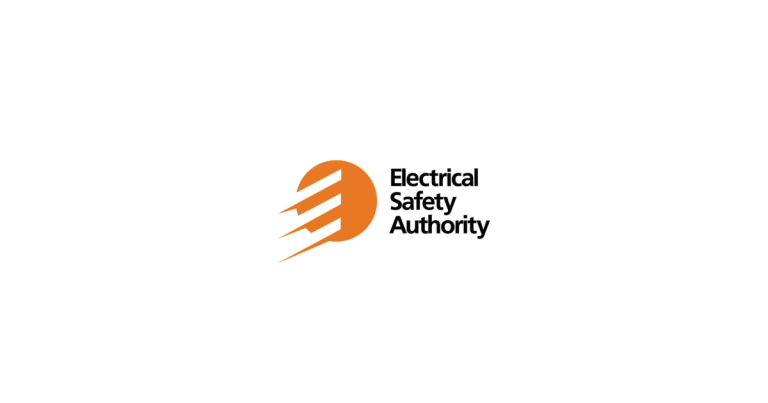Test & Measurement Safety Considerations

May 3, 2021
By Blake Marchand
When troubleshooting electrical issues its important to recognize electrical shock is a result of current (not voltage, although the amount of voltage is a factor) and that it takes a fairly low amount of current to result in injury.
“Electricity needs to be respected. Many times, in our industry that is not the case,” says Fluke sales engineer, Curt Geeting. It is human nature to become desensitized to risk the more we are exposed to it. So, it may not be a matter of negligence as much as complacency when it comes to ‘respecting’ electricity. Or it may be a matter of probability. You’re working with it everyday over a long period of time, mistakes are bound to happen.
Similarly, Terry Becker (P.Eng., CESCP, IEEE Senior Member) notes that ‘high voltage’ does not always equate to ‘high risk’. Low voltage electrical equipment may present a higher or equal risk without the appropriate application of hierarchy risk procedures.
“In the CSA Z462 Workplace electrical safety Standard it doesn’t use the voltage level of electrical equipment to define low risk, medium risk, high risk or extreme risk/danger. CSA Z462 Clause 4.1.7.8 Risk assessment procedure outlines three requirements in completing a risk assessment: identify hazards; assess risks; and implement risk control according to the hierarchy of risk control methods to eliminate exposure or reduce risk to as low as reasonably practicable.”
Becker explains that, “The starting point is the work task description.” CSA Z462 provides a table (Table 2) to help estimate the likelihood of arc flash incident occurring for AC and DC systems. “It provides thirty-one (31) discrete energized electrical work tasks. The voltage of the electrical equipment that will be worked on is secondary and is used to define if an abnormal arcing fault can be sustained and lead to an arc flash occurring. The voltage also determines if a shock hazard exposure can occur. The third consideration in completing the risk assessment procedure is the actual electrical equipment that the energized electrical work task will be performed on. Following this sequence, a qualitative risk assessment for the Job and discrete work task(s) will be used to determine the residual risk level based on the energized electrical work task description first.”
Causes of arc flash and shock include: loose panel wiring, screws or fasteners that fall into an unsecured panel against a live bus, hand tools shorted across two phases, incorrect test probes, misuse of measurement stools.
With respect to the latter, Geeting says issues occur when, “Measuring across phases with an inline amp meter, creating a short circuit. Measuring continuity on a live circuit with a tool that cannot withstand full voltage. Accidental shorting of phases with a test lead tip that is too long of the safety category.”
Most electricians will require a CAT III rating within the 600 volt range.
When detecting the absence of voltage, often the first device used is a non-contact voltage detector. Even though you are not physically touching equipment the appropriate CAT rating needs to be observed and PPE still needs to be worn.
To verify it is operating properly, Geeting notes, you should use the live-dead-live method by finding an associated live circuit to test and verify the operation of the meter, then “Go into the target circuit, which we’re assuming are de-energized and are looking to make sure that it is dead or de-energized. And then we go back to the live circuit again. So, its the three-point method by which to verify my contact or non-contact voltage tester is in fact working.”
“The idea is, obviously, I’m trying to have 100% confidence that circuit is in fact de-energized. And this is the easiest way to figure that out and know that my meter is working and telling me the truth.”
There are instances where you won’t have a reference point to verify the tester. There are handheld units that provide a regulated/fixed AC or DC output voltage, which can be used to verify testers, as well as multimeters and clampmeters.
Test leads may be the biggest weakness in your multimeter systems. Something as simple as wrapping them around your meter can cause issues, “pulling on the leads in any direction and wrapping them around your meter tightly, you’re basically going to be breaking the small conductors inside those wires,” says Geeting.
It’s important to confirm the meter has shrouded connectors and finger guards, the insulator is not pulled away and the probe tip isn’t loose, broken, or blown off. Along with ensuring the meter is appropriately rated and designed for the application.
It is also worth noting a few best practices that have been noted by a couple of contractors and industry experts… work on de-energized circuits whenever possible. Maintain your tools and PPE. If possible, don’t work alone. Connect the grounded lead, then hot and disconnect the hot lead before the grounded lead. Use live-dead-live test method.
Given that its not always possible to fully eliminate risk and given the number of hours electricians put it in on the job, its important to recognized mistakes will be made. And often, the most obvious things are the easiest for us to overlook. In this context, the importance of reviewing and following basic procedure and being diligent about the best practices you’ve developed throughout your career can’t be overstated.




![Guide to the Canadian Electrical Code, Part 1[i] – A Road Map: Section 52 — Diagnostic imaging installations](https://electricalindustry.ca/wp-content/uploads/2022/11/Guide-CE-Code-2-768x432.png)





![Guide to the Canadian Electrical Code, Part 1[i] – A Road Map: Section 52 — Diagnostic imaging installations](https://electricalindustry.ca/wp-content/uploads/2022/11/Guide-CE-Code-2.png)






